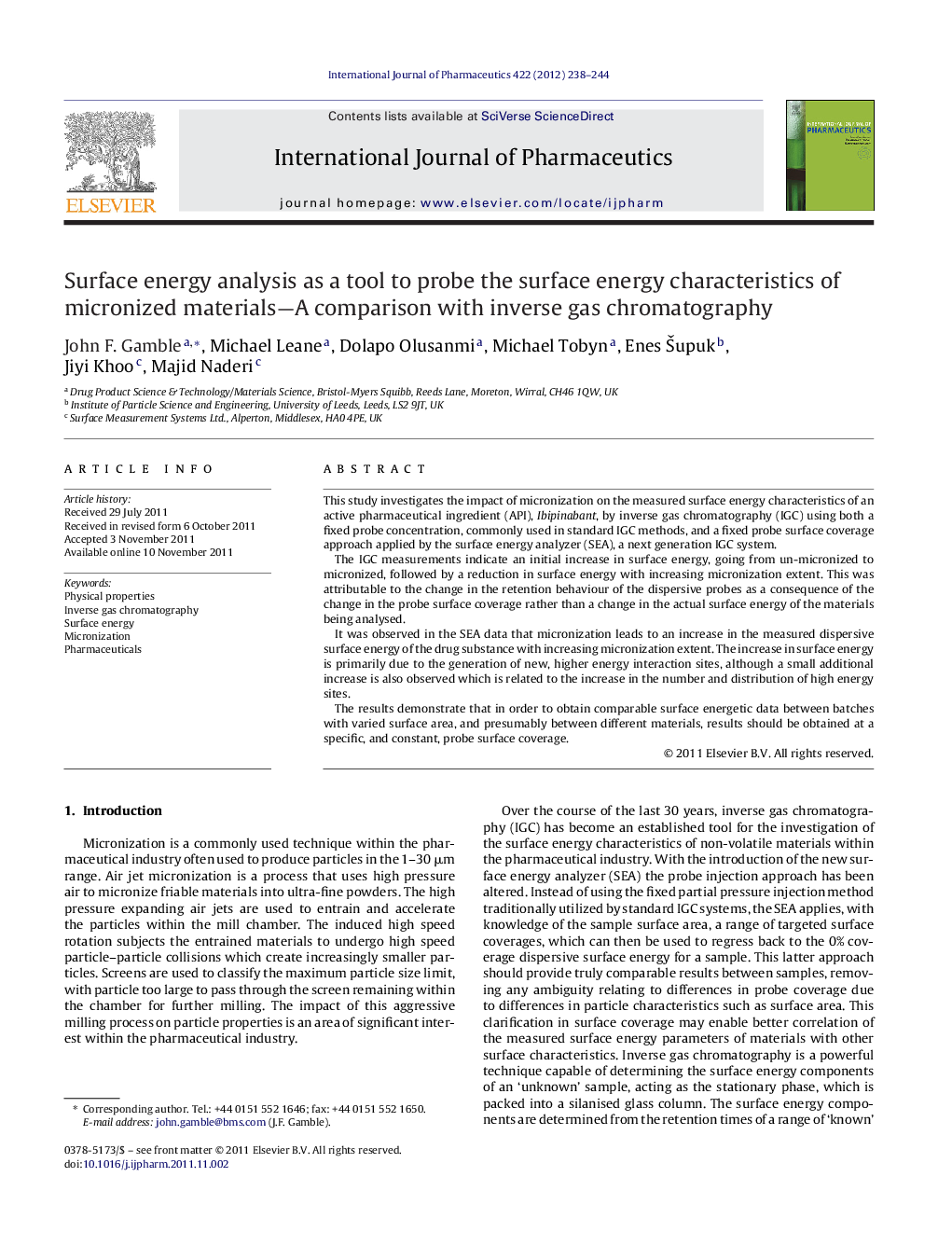| Article ID | Journal | Published Year | Pages | File Type |
|---|---|---|---|---|
| 2503104 | International Journal of Pharmaceutics | 2012 | 7 Pages |
This study investigates the impact of micronization on the measured surface energy characteristics of an active pharmaceutical ingredient (API), Ibipinabant, by inverse gas chromatography (IGC) using both a fixed probe concentration, commonly used in standard IGC methods, and a fixed probe surface coverage approach applied by the surface energy analyzer (SEA), a next generation IGC system.The IGC measurements indicate an initial increase in surface energy, going from un-micronized to micronized, followed by a reduction in surface energy with increasing micronization extent. This was attributable to the change in the retention behaviour of the dispersive probes as a consequence of the change in the probe surface coverage rather than a change in the actual surface energy of the materials being analysed.It was observed in the SEA data that micronization leads to an increase in the measured dispersive surface energy of the drug substance with increasing micronization extent. The increase in surface energy is primarily due to the generation of new, higher energy interaction sites, although a small additional increase is also observed which is related to the increase in the number and distribution of high energy sites.The results demonstrate that in order to obtain comparable surface energetic data between batches with varied surface area, and presumably between different materials, results should be obtained at a specific, and constant, probe surface coverage.
Graphical abstractFigure optionsDownload full-size imageDownload as PowerPoint slide
